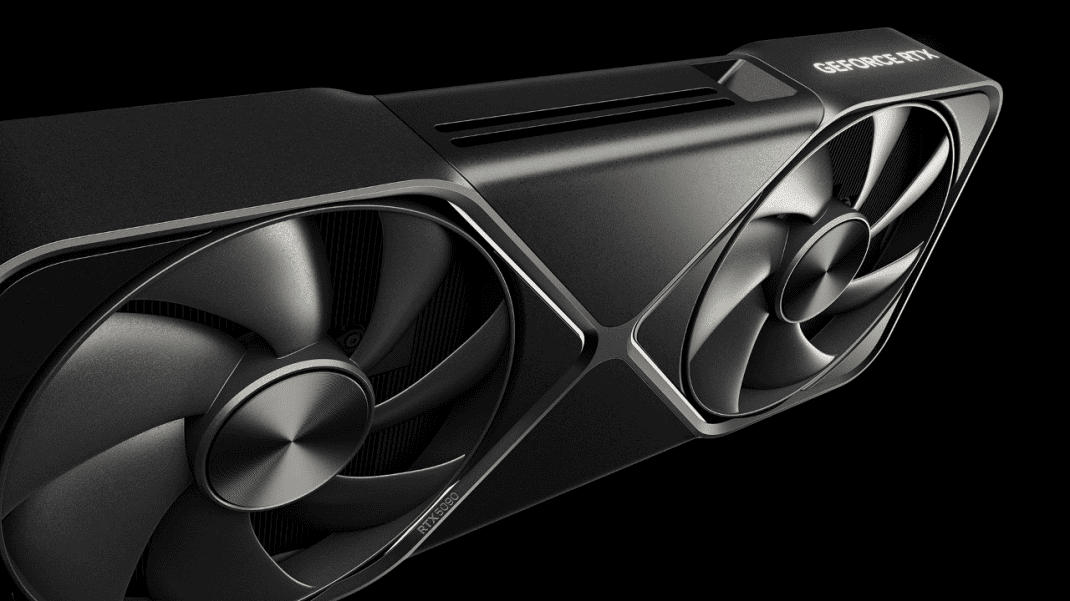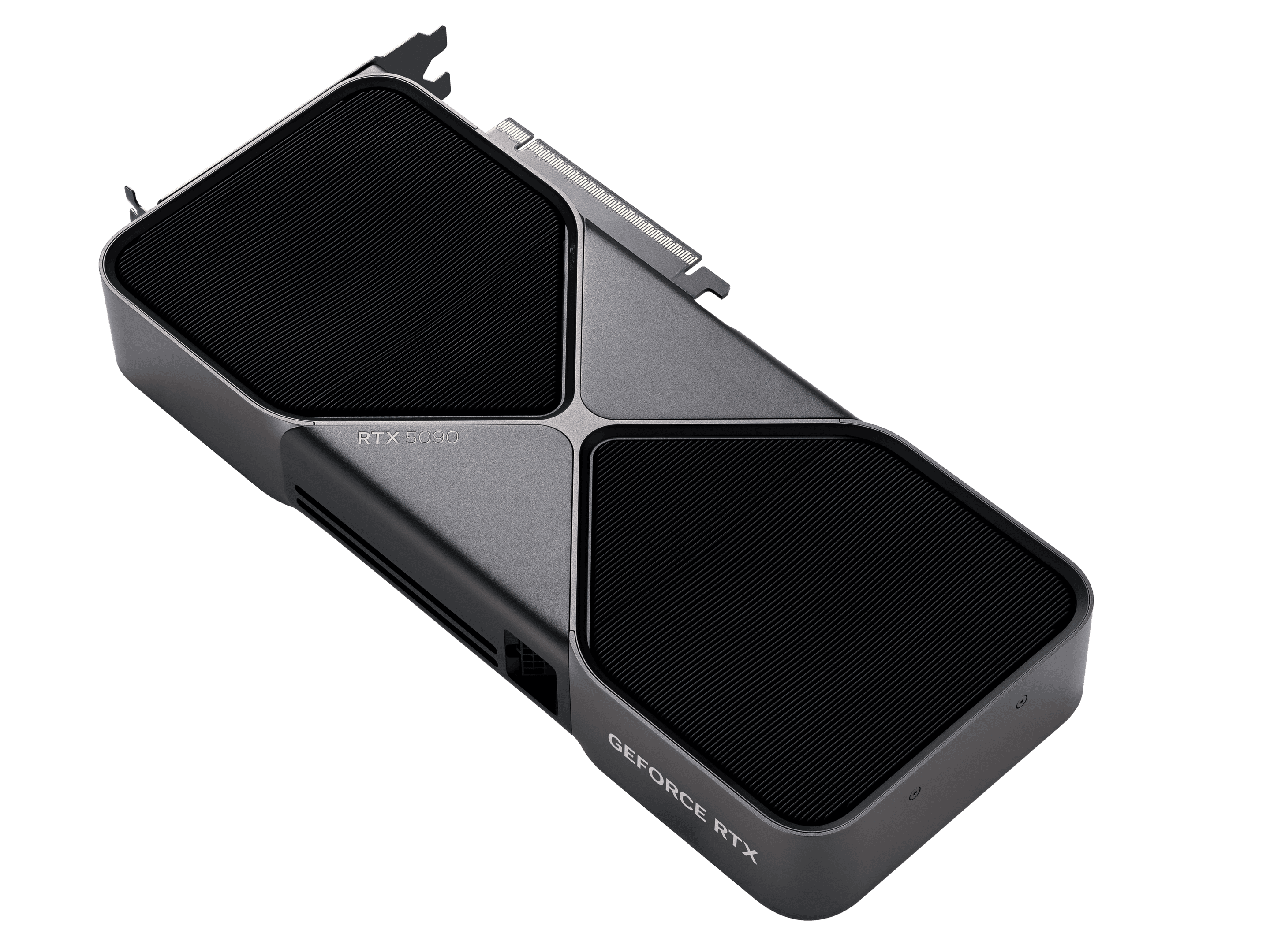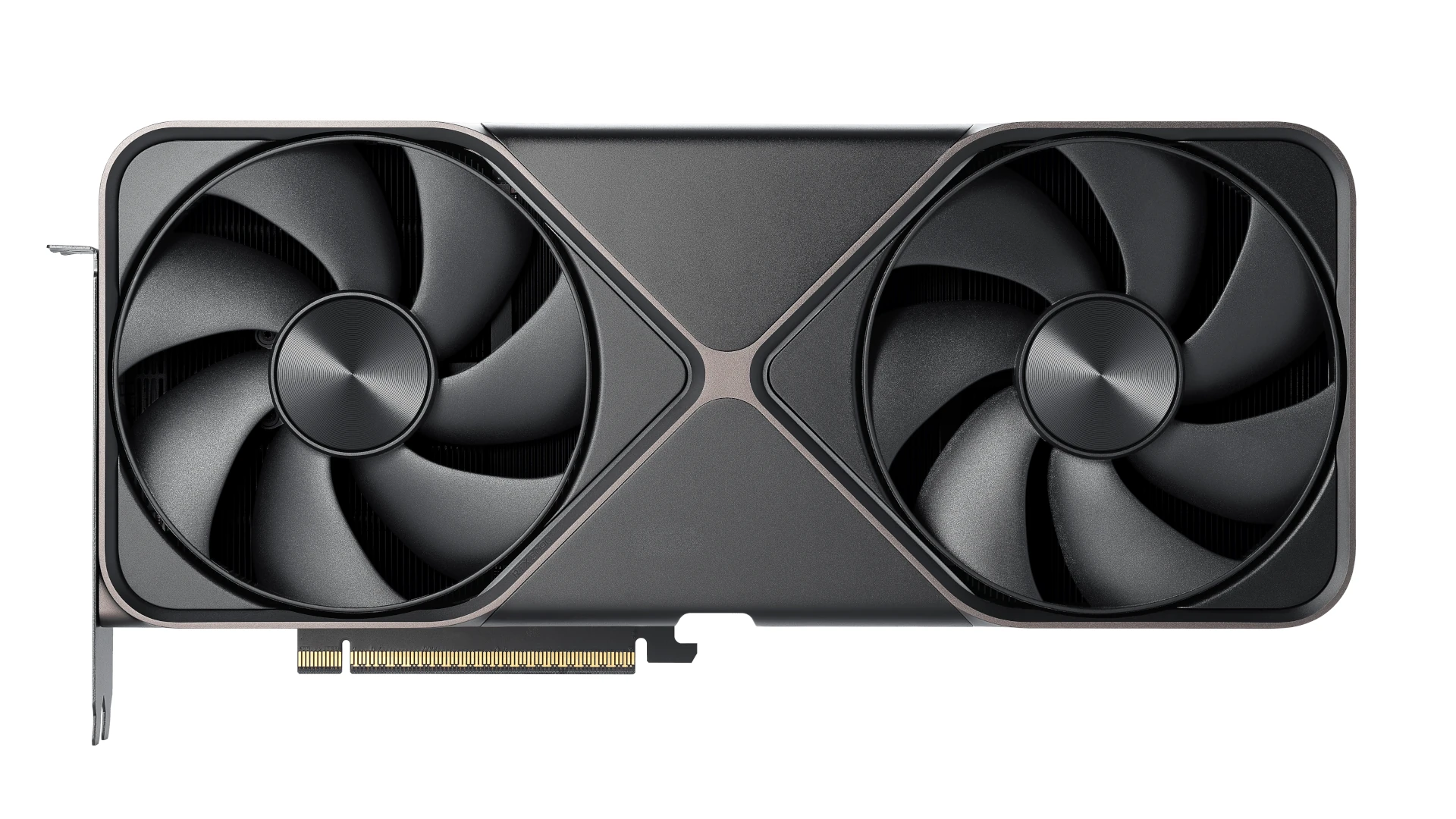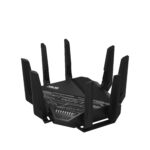NVIDIA has unveiled its latest lineup of graphics cards, the RTX 50 series. The flagship RTX 5090 GPU will cost $1,999, with the RTX 5080 priced at $999, the RTX 5070 Ti at $749, and the RTX 5070 at $549. These new GPUs, codenamed Blackwell, promise significant performance improvements over their predecessors.
The RTX 5090 stands out as the most powerful offering, boasting 21,760 CUDA cores and 32GB of GDDR7 memory. This card has a release date of January 30, 2025 and NVIDIA claims it will deliver twice the performance of the previous generation RTX 4090. This leap in power comes at a premium price point, targeting enthusiasts and professionals who demand cutting-edge graphics capabilities.
For gamers and content creators with more modest budgets, the RTX 5080 and 5070 series offer a balance of performance and affordability. These GPUs will likely provide substantial upgrades for users still running older graphics cards. The new RTX 50 series will be available starting January 30, 2025, giving tech enthusiasts something to look forward to in the coming weeks.

RTX 5090: Flagship Performance and Features
This article examines the 5090’s key features and capabilities, exploring its potential for gaming, content creation, and other graphics-intensive tasks. We’ll also analyze its performance compared to its predecessor and its main competitor, the AMD Radeon RX 7900 XTX, to help you understand its place in the current graphics card landscape.
Blackwell Architecture and CUDA Cores
The RTX 5090 is built on NVIDIA’s new Blackwell architecture, designed for improved performance and efficiency. It features a massive 21760 CUDA cores, a significant increase from the 16384 cores in the previous generation’s RTX 4090. This increase in core count contributes to the 5090’s impressive performance gains in gaming and other graphics-intensive tasks.
Memory Capacity and Speed
One of the standout features of the RTX 5090 is its 32 GB of GDDR7 memory. This is double the capacity of the RTX 4090, which had 24 GB of GDDR6X memory. The GDDR7 memory technology also offers higher bandwidth and improved efficiency compared to GDDR6X. This combination of increased capacity and faster memory speeds enables the 5090 to handle demanding workloads, such as high-resolution gaming and complex content creation tasks, with ease.
Clock Speeds and Power Consumption
The RTX 5090 has a boost clock speed of 2.41 GHz. While this is slightly lower than the RTX 4090’s 2.52 GHz boost clock, the 5090’s Blackwell architecture and increased core count more than compensate for the difference. The 5090 has a TDP of 575W, significantly higher than the 4090’s 450W. This means you’ll need a robust power supply to run the 5090, but it also reflects the card’s increased performance capabilities.
Gaming Performance
Early benchmarks suggest the RTX 5090 delivers exceptional gaming performance. It can achieve high frame rates at 4K resolution and beyond, even in demanding games with ray tracing enabled. Features like DLSS 4 further enhance performance by using AI to upscale images, allowing for even higher frame rates and smoother gameplay.
Content Creation Capabilities
The RTX 5090 is not just a gaming powerhouse; it’s also a formidable tool for content creators. The increased core count, faster memory, and architectural improvements benefit tasks such as video editing, 3D modeling, and animation. Applications like Blender, Adobe Premiere Pro, and Autodesk Maya can leverage the 5090’s power to accelerate rendering times and improve workflows.
Price and Availability
The RTX 5090 launched with an MSRP of $1999. This makes it a premium option, but its performance and features justify the cost for users who demand the best. Availability might be limited initially due to high demand, so be prepared to act quickly if you’re looking to purchase one.
Features and Specifications
| Feature | RTX 5090 |
|---|---|
| Architecture | Blackwell |
| CUDA Cores | 21760 |
| Boost Clock | 2.41 GHz |
| Memory | 32 GB GDDR7 |
| Memory Interface | 512-bit |
| TDP | 575W |
| Launch Price | $1999 |
RTX 5090 Advanced Specifications
Here’s a specifications table for the RTX 5090 based on data from NVIDIA:
| Feature | GeForce RTX 5090 |
|---|---|
| NVIDIA CUDA® Cores | 21760 |
| Shader Cores | Blackwell |
| Tensor Cores (AI) | 5th Gen, 3352 AI TOPS |
| Ray Tracing Cores | 4th Gen, 318 TFLOPS |
| Boost Clock (GHz) | 2.41 |
| Base Clock (GHz) | 2.01 |
| Standard Memory Config | 32 GB GDDR7 |
| Memory Interface Width | 512-bit |
| Technology Support | Blackwell |
| Ray Tracing | Yes |
| NVIDIA DLSS | DLSS 4, Super Resolution, DLAA, Ray Reconstruction, Frame Generation, Multi Frame Generation |
| NVIDIA Reflex | Reflex 2, Low Latency Mode, Frame Warp (Coming Soon) |
| NVIDIA Broadcast | Yes |
| PCI Express Gen 5 | Yes |
| Resizable BAR | Yes |
| NVIDIA App | Yes |
| NVIDIA Ansel | Yes |
| NVIDIA FreeStyle | Yes |
| NVIDIA ShadowPlay | Yes |
| NVIDIA Highlights | Yes |
| NVIDIA G-SYNC® | Yes |
| Game Ready Drivers | Yes |
| NVIDIA Studio Drivers | Yes |
| NVIDIA1 Omniverse | Yes |
| RTX Remix | Yes |
| Microsoft DirectX® 12 Ultimate | Yes |
| NVIDIA GPU Boost™ | Yes |
| NVIDIA NVLink™ (SLI-Ready) | No |
| Vulkan 1.4, OpenGL 4.6 | Yes |
| NVIDIA Encoder (NVENC) | 3x Ninth Gen |
| NVIDIA Decoder (NVDEC) | 2x Sixth Gen |
| AV1 Encode | Yes |
| AV1 Decode | Yes |
| CUDA Capability | 12.8 |
| VR Ready | Yes |
| Display Support | 4K at 480Hz or 8K at 120Hz with DSC |
| Standard Display Connectors | 3x DisplayPort(2), 1x HDMI(3) |
| Multi Monitor | up to 4 |
| HDCP | 2.3 |
| Card Dimensions | 304 mm |
| Length | 304 mm |
| Width | 137 mm |
| Slots | 2-Slot |
| SFF-Ready Enthusiast GeForce Card | Founders Edition Yes, Varies |
| Thermal and Power Specs | 90 |
| Maximum GPU Temperature (in C) | 90 |
| Total Graphics Power (W) | 575 |
| Required System Power (W) | 1000 |
| Supplementary Power Connectors | 4x PCIe 8-pin OR 1x 600W PCIe Gen 5 |
RTX 5090 vs RTX 5080 vs RTX 4090
Here’s a comparison table for the RTX 5090, 5080, and 4090 graphics cards:
| Feature | RTX 5090 | RTX 5080 | RTX 4090 |
|---|---|---|---|
| NVIDIA CUDA® Cores | 21760 | 10752 | 16384 |
| Shader Cores | Blackwell | Blackwell | Ada Lovelace |
| Tensor Cores (AI) | 5th Gen, 3352 AI TOPS | 5th Gen, 1801 AI TOPS | 4th Gen, 1315 AI TOPS |
| Ray Tracing Cores | 4th Gen, 318 TFLOPS | 4th Gen, 171 TFLOPS | 4th Gen, 131 TFLOPS |
| Boost Clock (GHz) | 2.41 | 2.62 | 2.52 |
| Base Clock (GHz) | 2.01 | 2.30 | 2.23 |
| Standard Memory Config | 32 GB GDDR7 | 16 GB GDDR7 | 24 GB GDDR6X |
| Memory Interface Width | 512-bit | 256-bit | 384-bit |
| Technology Support | Blackwell | Blackwell | Ada Lovelace |
| Ray Tracing | Yes | Yes | Yes |
| NVIDIA DLSS | DLSS 4, Super Resolution, DLAA, Ray Reconstruction, Frame Generation, Multi Frame Generation | DLSS 4, Super Resolution, DLAA, Ray Reconstruction, Frame Generation, Multi Frame Generation | DLSS 3, Super Resolution, DLAA, Frame Generation |
| NVIDIA Reflex | Reflex 2, Low Latency Mode, Frame Warp (Coming Soon) | Reflex 2, Low Latency Mode, Frame Warp (Coming Soon) | Reflex 2, Low Latency Mode, Frame Warp |
| NVIDIA Broadcast | Yes | Yes | Yes |
| PCI Express Gen 5 | Yes | Yes | Yes |
| Resizable BAR | Yes | Yes | Yes |
| NVIDIA App | Yes | Yes | Yes |
| NVIDIA Ansel | Yes | Yes | Yes |
| NVIDIA FreeStyle | Yes | Yes | Yes |
| NVIDIA ShadowPlay | Yes | Yes | Yes |
| NVIDIA Highlights | Yes | Yes | Yes |
| NVIDIA G-SYNC® | Yes | Yes | Yes |
| Game Ready Drivers | Yes | Yes | Yes |
| NVIDIA Studio Drivers | Yes | Yes | Yes |
| NVIDIA Omniverse | Yes | Yes | Yes |
| RTX Remix | Yes | Yes | Yes |
| Microsoft DirectX® 12 Ultimate | Yes | Yes | Yes |
| NVIDIA GPU Boost™ | Yes | Yes | Yes |
| NVIDIA NVLink™ (SLI-Ready) | No | No | No |
| Vulkan 1.4, OpenGL 4.6 | Yes | Yes | Yes |
| NVIDIA Encoder (NVENC) | 3x Ninth Gen | 2x Ninth Gen | 2x Ninth Gen |
| NVIDIA Decoder (NVDEC) | 2x Sixth Gen | 2x Sixth Gen | 2x Fifth Gen |
| AV1 Encode | Yes | Yes | Yes |
| AV1 Decode | Yes | Yes | Yes |
| CUDA Capability | 12.8 | 12.8 | 8.9 |
| VR Ready | Yes | Yes | Yes |
| Display Support | 4K at 480Hz or 8K at 120Hz with DSC | 4K at 480Hz or 8K at 120Hz with DSC | 4K at 480Hz or 8K at 120Hz with DSC |
| Standard Display Connectors | 3x DisplayPort(2), 1x HDMI(3) | 3x DisplayPort(2), 1x HDMI(3) | 3x DisplayPort(2), 1x HDMI(3) |
| Multi Monitor | up to 4 | up to 4 | up to 4 |
| HDCP | 2.3 | 2.3 | 2.3 |
| Card Dimensions | 304 mm | 304 mm | 304 mm |
| Length | 304 mm | 304 mm | 304 mm |
| Width | 137 mm | 137 mm | 137 mm |
| Slots | 2-Slot | 2-Slot | 2-Slot |
| SFF-Ready Enthusiast GeForce Card | Founders Edition Yes, Varies | Founders Edition Yes, Varies | Founders Edition Yes, Varies |
| Thermal and Power Specs | 90 | 88 | 90 |
| Maximum GPU Temperature (in C) | 90 | 88 | 90 |
| Total Graphics Power (W) | 575 | 360 | 450 |
| Required System Power (W) | 1000 | 850 | 850 |
| Supplementary Power Connectors | 4x PCIe 8-pin OR 1x 600W PCIe Gen 5 | 3x PCIe 8-pin OR 1x 450W PCIe Gen 5 | 3x PCIe 8-pin OR 1x 450W PCIe Gen 5 |
Comparing the RTX 5090, 5080, and 4090
The RTX 5090 sits at the top, offering the most CUDA cores (21760) and a massive 32 GB of GDDR7 memory. It’s the performance king, but also has the highest power consumption (575W). The RTX 5080 is a more balanced option with 10752 CUDA cores and 16 GB of GDDR7 memory, consuming 360W. The RTX 4090, while still powerful with 16384 CUDA cores and 24 GB of GDDR6X memory, is the previous generation’s flagship. It falls in between the 5090 and 5080 in terms of power consumption (450W).
Essentially, the 5090 is for those who demand the absolute best, the 5080 offers a great balance, and the 4090 is still a strong contender but from the previous generation.
The Competitive Landscape: AMD’s Radeon RX 7900 XTX
While the RTX 5090 sits at the top of NVIDIA’s lineup, it’s not the only high-performance graphics card on the market. AMD’s Radeon RX 7900 XTX is a direct competitor, offering impressive performance and features at a slightly lower price point. It features AMD’s RDNA 3 architecture, 24 GB of GDDR6 memory, and a 384-bit memory interface.
The RX 7900 XTX trades blows with the RTX 5090 in many benchmarks, offering comparable performance in some games and even exceeding it in others. However, the 5090 generally has an edge in ray tracing performance and features like DLSS. The choice between these two cards often comes down to personal preference, specific use case, and budget.

Key Takeaways
- NVIDIA’s RTX 5090 offers double the performance of its predecessor at $1,999
- The new GPU lineup ranges from $549 to $1,999, catering to various user needs
- RTX 50 series GPUs will be available for purchase starting January 30, 2025
Overview of NVIDIA’s RTX 50 Series GPUs
NVIDIA has once again raised the bar for graphics card performance with the release of its RTX 50 series, led by the flagship RTX 5090. This GPU boasts impressive specifications, including a massive increase in CUDA cores, a leap to GDDR7 memory, and architectural advancements that promise significant performance gains over the previous generation. But with a premium price tag, is the RTX 5090 worth the investment?
NVIDIA’s RTX 50 Series introduces groundbreaking performance and AI capabilities. These GPUs offer significant improvements in graphics processing and AI acceleration, setting new standards for gaming and professional applications.
Comparative Analysis of RTX 5090, 5080, and 5070 Series
The RTX 5090 leads the lineup with a price tag of $1,999. It boasts the highest performance in the series, ideal for demanding tasks and high-end gaming. The RTX 5080 follows at $999, offering a balance of power and affordability.
For mid-range options, NVIDIA presents the RTX 5070 Ti at $749 and the RTX 5070 at $549. These GPUs provide excellent performance for their price points.
Key differences:
- CUDA cores: Higher in 5090, scaled down in 5080 and 5070 series
- GDDR7 memory: Varying capacities across models
- AI TOPS: 5090 offers the highest, with 5070 at 988 AI TOPS
Blackwell Architecture and AI Integration
The RTX 50 Series is built on NVIDIA’s Blackwell architecture, focusing on AI and ray tracing capabilities. This architecture enables advanced features like neural materials and enhanced DLSS technology.
AI integration is a key focus, with each GPU offering impressive AI TOPS (Tensor Operations Per Second):
- RTX 5090: Highest AI performance
- RTX 5080: Balanced AI capabilities
- RTX 5070 Ti: 1,406 AI TOPS
- RTX 5070: 988 AI TOPS
These AI capabilities enhance gaming experiences and accelerate professional workflows. The Blackwell architecture also improves ray-traced graphics, pushing the boundaries of realistic rendering in real-time applications.
Pricing and Market Positioning
NVIDIA’s RTX 5000 series introduces new price points across its lineup. The flagship RTX 5090 sets a high bar, while other models offer varying performance tiers at different costs.
Pricing Strategy and Cost Implications
The RTX 5090 carries a $1,999 price tag, positioning it as NVIDIA’s premium offering. This represents a significant investment for enthusiasts and professionals seeking top-tier performance.
The RTX 5080 is priced at $999, targeting high-end gamers and content creators. It offers a balance between performance and cost.
NVIDIA’s RTX 5070 Ti comes in at $749, while the RTX 5070 is set at $549. These mid-range options aim to provide strong performance at more accessible price points.
Compared to previous generations, some models show price decreases. The RTX 5080 costs $200 less than its predecessor, the RTX 4080, at launch. The RTX 5070 Ti is $50 cheaper than the RTX 4070 Ti was at release.
Market Comparison with AMD and Past NVIDIA Generations
NVIDIA’s pricing strategy aims to maintain its market position against AMD’s offerings. The high-end RTX 5090 has no direct competitor from AMD, as AMD has left the high-end GPU market.
The RTX 5080 and 5070 Ti will likely compete with AMD’s upcoming RX 9070 and RX 9070 XT. NVIDIA’s pricing suggests confidence in their performance advantages.
Compared to the RTX 4000 series, the 5000 series offers improved specs at similar or lower price points. This includes advancements in VRAM, memory bandwidth, and features like DLSS 4.
NVIDIA’s strategy appears to focus on providing better value across all tiers while maintaining premium pricing for its top-end model.







